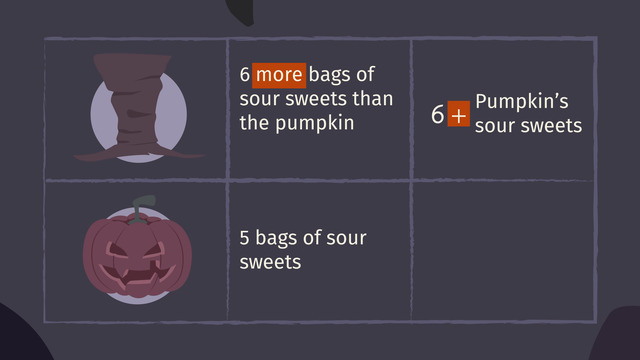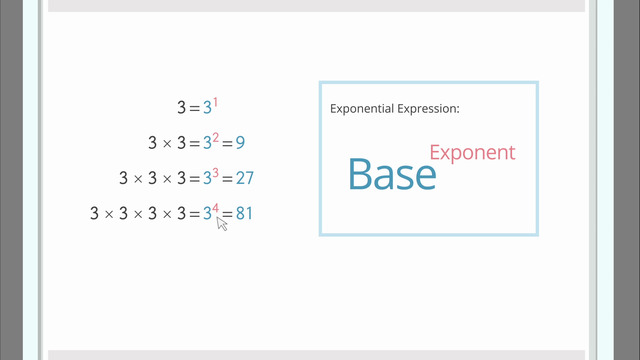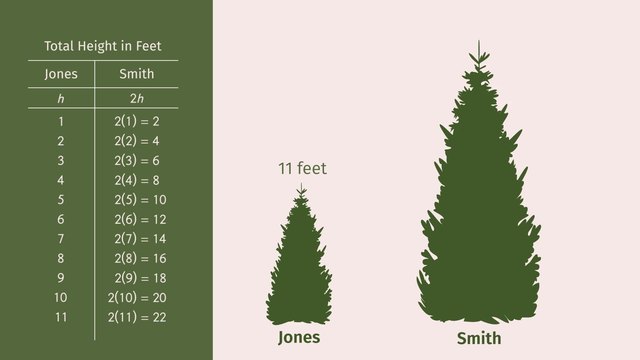Writing and Evaluating Expressions with Addition and Subtraction
- Writing and Evaluating Expressions with Addition and Subtraction
- Writing and Evaluating Expressions – Explanation
- Writing and Evaluating Expressions – Example
- Writing and Evaluating Expressions – Practice
- Writing and Evaluating Expressions – Summary
- Writing and Evaluating Expressions – Frequently Asked Questions


Basics on the topic Writing and Evaluating Expressions with Addition and Subtraction
Writing and Evaluating Expressions with Addition and Subtraction
In everyday life, we often need to determine amounts, solve problems, or make decisions based on mathematical calculations. Writing and evaluating expressions with addition and subtraction are fundamental skills in arithmetic that allow us to convert real-world situations into mathematical terms and then solve them.
Writing expressions involves creating algebraic statements that encapsulate real-world scenarios using symbols and numbers. Evaluating expressions means calculating the numerical value of these algebraic expressions, primarily through operations like addition and subtraction.
Writing and Evaluating Expressions – Explanation
Similar to writing numerical expressions, writing and evaluating expressions with addition and subtraction is crucial for problem-solving in various contexts, including budgeting, planning events, and academic scenarios.
| Step | Example |
|---|---|
| Step 1: Identify the Problem |  |
| Step 2: Define the Variables |  |
| Step 3: Write the Expression and Step 4: Substitute Known Values |  |
| Step 5: Evaluate the Expression |
 |
| Step 6: Verify the Solution | 
|
Writing and Evaluating Expressions – Example
This section will show you how to turn real-life situations into math problems and find the answers. Here's a table of keywords that can help you figure out which math operation to use:
| Operation | Keywords |
|---|---|
| Addition | plus, add, total, sum, increase, together |
| Subtraction | minus, subtract, less, decrease, fewer, remove |
By recognizing these keywords, you can write and solve math expressions more easily! Let's explore some examples to practice.
Example 1: You are organizing a community clean-up and need to plan the volunteer hours. You estimate that the clean-up will take a total of 120 hours, but several volunteers have already signed up for some of the hours.
Example 2: In a board game, you start with 0 points and earn points each round. If in the first round, you earn 15 points and in the second round you earn double the first round, how many total points do you have after two rounds?
Writing and Evaluating Expressions – Practice
Practice writing and evaluating expressions on your own!
Writing and Evaluating Expressions – Summary
Understanding how to write and evaluate expressions with addition and subtraction is essential for solving real-world problems efficiently. This skill forms the foundation of algebra and helps students and adults alike make informed decisions based on numerical data.
Key Learnings from this Text:
- Writing and evaluating expressions with addition and subtraction helps solve real-world problems by turning situations into mathematical terms.
- The process includes identifying quantities and their relationships, creating expressions, and calculating solutions.
- Recognizing keywords like "plus" and "minus" aids in correctly setting up and solving mathematical problems.
Writing and Evaluating Expressions – Frequently Asked Questions
Transcript Writing and Evaluating Expressions with Addition and Subtraction
Spooky! Is this a horror movie? No, it’s just Halloween in the 'burbs! It seems like the neighborhood kids really scored at trick-or-treating. But although their bags are full of treats, not every treat is their favorite. So the kids want to exchange with each other. The witch is jubilant for jelly beans, the scarecrow salivates for sour sweets and the pumpkin is partial to peppermint. To exchange for the treats they really want, these kids need to know how to write and evaluate expressions using addition and subtraction. Before the trick-or-treaters can exchange their goodies they have to figure out who has what candy. How many bags of sour sweets does the scarecrow have?
Preparation - addition in expressions
Let’s get organized by writing the information we know. The scarecrow has 6 more bags of sour sweets than the pumpkin and the pumpkin has 5 bags of sour sweets. So, to calculate out how many bags of sour sweets the scarecrow has, we turn these words into a mathematical expression. The keyword “more” helps us know that we should add 6 to the number of treats the pumpkin has. We know the pumpkin has 5 sour sweets, so we can replace the words with 5. This gives us 6 plus 5, which equals 11 sour sweets. This means that the Scarecrow has 11 of his favorite sweets in total. We still have more candy left. The witch has 3 packs of jelly beans. The pumpkin has 6 more packs than the witch does. Then, the pumpkin receives 7 packs of jelly beans from the scarecrow. Now, how many more packs will the pumpkin have than the witch? Let's work the problem step-by-step to translate words to numbers and operations. As we know, the witch has 3 packs of jelly beans. And earlier we said that the pumpkin has 6 more. Saying 'more' means we should use the addition operation to get the number of packs of jelly beans the pumpkin has. Since we already know the witch has 3 packs of jelly beans, we can just substitute that in our expression and evaluate. Since the pumpkin receives 7 packs of jelly beans from the scarecrow, we can add that to our earlier sum and get 16.
Solution - subtraction in expressions
Have we solved the question? Not yet. Since the question asked how many more jelly beans the pumpkin has than the witch, we'll have to subtract the witch's packs of jelly beans from the pumpkin's. This gives us 13. The pumpkin has 13 more packs of jelly beans than the witch. Now that everyone's happy with their treats. What’s that sound? There's a rustling in the bushes. Every man for himself!
Writing and Evaluating Expressions with Addition and Subtraction exercise
-
Determine the total number of bags of sour sweets the scarecrow has.
HintsIf Peter has $8$ candies and Paul has $2$ candies more candles than Peter, then Paul has $10$ candies.
More than indicates that the number of bags of sour sweets that the scarecrow has is greater than the number of bags the pumpkin has.
Imagine this situation as follows: you have $6$ bags of sour sweets and you put $5$ more bags with those $6$ bags.
SolutionHow many bags of sour sweets does the scarecrow have:
The scarecrow has $6$ more bags of sour sweets than the pumpkin.
The keyword more indicates addition.
So we have to add the number of bags the pumpkin has to $6$.
We already know the number of pumpkin's bags, it's $5$.
Thus, we have $6+5=11$.
The scarecrow has eleven bags of sour sweets.
-
Establish the corresponding algebraic expression.
HintsMore than indicates addition. The pumpkin has more jelly bean packs than the witch.
Also the word receives is a keyword for addition.
The pumpkin already has a certain number of jelly bean packs and he gets $7$ more packs.
If you want to know how many more packs the pumpkin has, then take the difference.
Pay attention to the order: while you can use the commutative property for addition, $a+b=b+a$, it is the case that $a-b\neq b-a$.
SolutionThe witch has three packs of jelly beans. So this is the number to put into the first row.
The pumpkin has $6$ more packs than the witch and receives $7$ packs from the scarecrow; we can proceed as follows:
- Add $6$ to $3$. This leads to $6+3=9$.
- Next add $7$ to the resulting sum, $9$, to get $9+7=16$.
So the pumpkin has $13$ more packs of jelly beans than the witch.
-
Find the mistakes in the calculation.
HintsFirst, look at the keywords:
- More than indicates addition.
- In total implies addition as well.
- Take away indicates subtraction.
Pay attention to the order.
There is a difference between $4-2=2$ and $2-4=-2$.
Check the expressions by evaluating them. Next check if the result coincides with the word problem.
SolutionTo write a word problem as an algebraic expression you have to detect keywords.
- Tim has eaten $3$ muffins. Gina has eaten $4$ muffins more.
- Tim has eaten $3$ muffins and Gina has eaten $2$ muffins.
So, in total they have eaten $3+2=5$ muffins.
- Tim has eaten $3$ muffins and Gina has eaten $2$ muffins. How many muffins more has Tim eaten than Gina?
$3-2=1$.
So we can conclude that Tim has eaten $1$ more muffin than Gina.
- Gina has eaten $4$ muffins. If you take away $2$ muffins, you get the number of muffins eaten by Tim.
Tim has eaten $2$ muffins.
-
Decide how many more muffins Ben has eaten than Jerry.
HintsMore than indicates addition. The number of Ben's muffins is greater than the number of Jerry's muffins.
Pay attention to the order:
While you can use the commutative property, $a+b=b+a$, note that $a-b\neq b-a$.
Give away indicates subtraction.
SolutionLet's start with Jerry's $4$ Muffins. Ben has $2$ muffins more. This gives us $4+2=6$ muffins.
The $8$ muffins from aunt Mary should be added to the $6$ muffins we already have:
$6+8=14$.
Now Ben gives $5$ away to his friend Paul. This reduces the number of muffins to
$14-5=9$ muffins.
Last we want to know how many muffins Ben has more than Jerry. For this we have to subtract $4$, the number of Jerry's muffins, from $9$. This results in $9-4=5$.
So we can conclude that Ben has $5$ Muffins more than Jerry.
-
Decide which keyword belongs to which operation.
HintsCreate an example for each given keyword.
For example, Paul has $4$ books and Anne has $3$ books more than Paul.
So Anna has $7$ books.
Keep the following in mind:
- Summand $+$ summand $=$ sum. The corresponding operation is addition.
- Minuend $-$ subtrahend $=$ difference. The corresponding operation is subtraction.
- $+$ is the plus-sign for addition.
- $-$ is the minus-sign for subtraction.
SolutionTo write and to evaluate algebraic expressions you first have to recognize keywords for the corresponding operation.
The following are some keywords for addition:
- add
- altogether
- more than
- both
- in all
- in total
- sum
- difference
- fewer than
- left
- minus
- remains
- subtract
-
Identify the unknown quantity in each word problem. Write the corresponding expression down and evaluate it.
HintsFirst, determine the corresponding algebraic expression or equation using keywords.
Put the value for the variable in the corresponding expression.
Solve an equation if it's possible.
Just have a look at the example beside.
SolutionSarah and Erin: Sarah has been swimming for $4$ years more than Erin, $e$. This leads to $4+e$. If we know the number of years Erin swims, namely $5$ years, we can determine the corresponding number of years Sarah has been swimming: $4+5=9$.
The Braves scored $3$ fewer runs than the reds; this leads to $r-3$. With the known runs of the reds, $7$, we can calculate $7-3=4$, the number of Braves runs.
Paul counts the number of the visitors of Matteo's taco bar. There are $2$ more males than females. This leads to $f+2$. If the number of female visitors, namely $23$, is known, then this gives us the number $23+2=25$ of male visitors.
Matteo and Lucy practice $m+l$ word problems together. The total number of tasks is $22$. Thus we get the equation $m+l=22$. Knowing that Matteo does $13$ tasks we can follow $13+l=22$. Subtracting $13$ leads to $l=22-13=9$.











